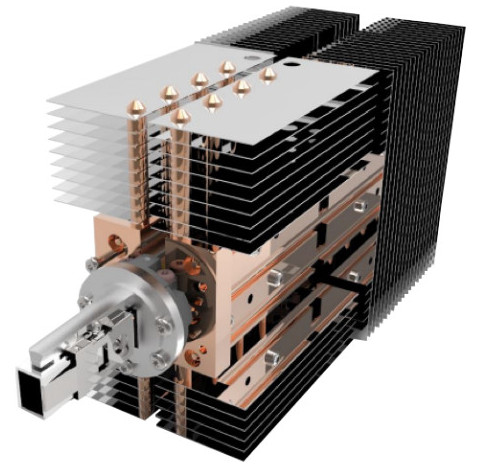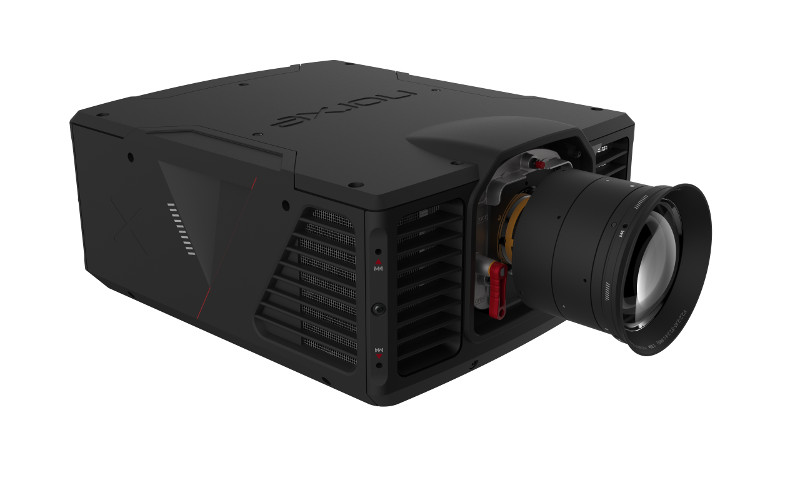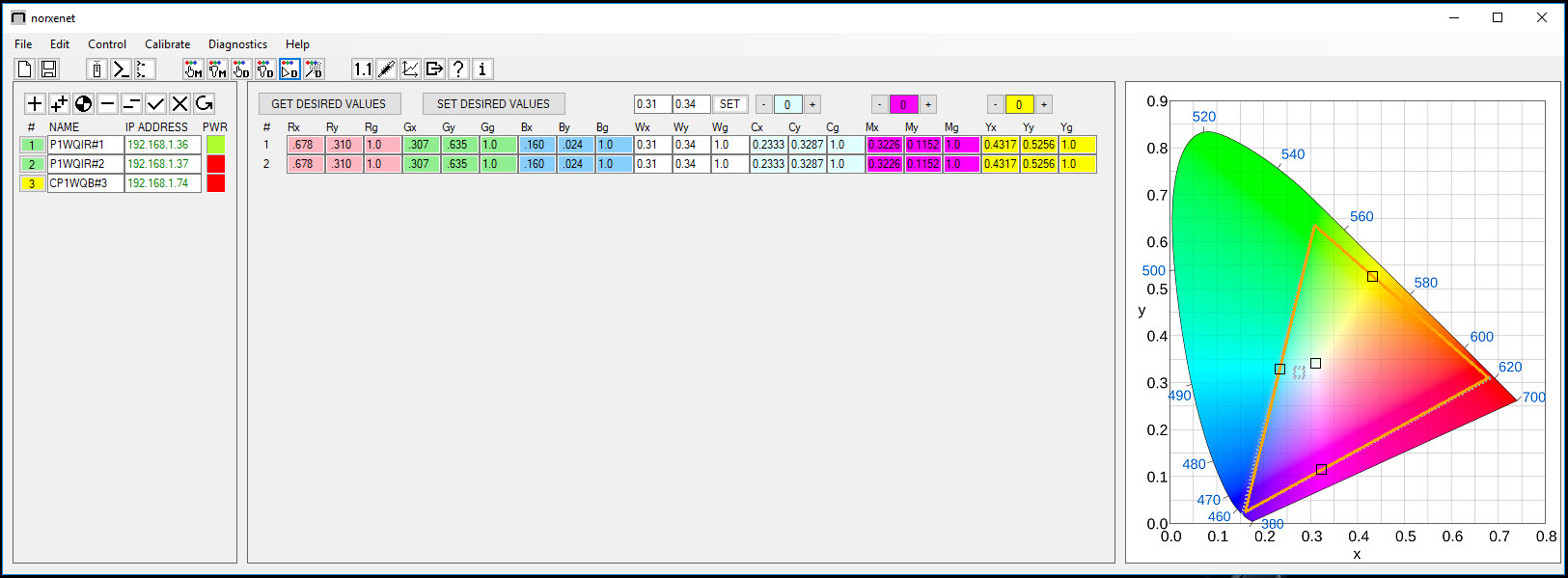Norxe is a start up from the same founders of projectiondesign, which was acquired by Barco some years back. Now, the two companies are in direct competition to build high-lumen LED projectors in neighboring towns in Norway. (Norxe Uses I/ITSEC to Soft Launch Projector Company)
Barco’s version is the FL40 while the Norxe version is called the P1. This was shown in a darkened “whisper suite” at I/ITSEC 2017, which was actually quite busy. While the FL40 isn’t due until the second half of 2018, the P1 has been available since July with pricing from €21K. It was also in at least one other booth on the show floor (Immersive Display Solutions in a single-person workstation).

Both products get to higher lumen levels using the HLD device from Philips which enables a much higher green light with modest étendue than can be achieved with a direct green LED. Barco is targeting 2300-2500 lumen using a 0.66” WQXGA (2560×1600) resolution chip with and without image shifting. Norxe appears to be using a 0.9” WQXGA chip with no image shifting. However, there are two resolutions available: WQXGA (2560×1600) and WUXGA (1920 x 1200), both 0.9″ chips.

Two brightness modes are also available:
- 2,500 WQXGA RGB mode,
- 3,900 WQXGA brightness mode
- 2,750 WUXGA RGB mode,
- 4,250 WUXGA brightness mode
These higher level brightness modes are unprecedented for an LED projector. How Norxe does it, they would not say other than they employ some clever IP to obtain these levels. This was demonstrated in the whisper suite creating a very bright, high-contrast and richly-colored image. These higher brightness modes are not commercially available yet, however.
Contrast is rated at 1,600:1 (full aperture) to 8,000:1 (F/8) sequential and >5,000,000:1 dynamic. We also asked about the checkerboard contrast and were told it is 430:1 – very high indeed. This is achieved with very careful attention to understanding where all the reflections in the optical block are and applying appropriate coatings and black absorbing paint (they tested 50 black paint samples to find two that were acceptable). Further, the projector can operate at 120 Hz with WQXGA resolution! 3D operation using active glasses or passive Infitec technology is possible as well.
Since the projector is offered for the simulation market, there is also the option to add an IR LED (740nm is standard). For NVG applications, the projector can support a direct IR channel input or the “clone mode” where the IR channel data is extracted from the RGB data.
Connectivity includes 2 x Dual Link DVI, 1 x DisplayPort 1.3, 1 x HDMI 2.0. DP 1.4 will become available in Q1’18 we were told as well.
One of the demos on display was side-by-side with internal blending for the flat screen. This was running at 120 Hz with odd frames coming over one DVI connector and even frames over the other connector (a limitation of the IG). DP1.3/1.4 and HDMI 2.0 can support these resolutions at 120 Hz over a single cable if the IG can output it.

We were also shown some CAD drawings of the projector and optical block. This latter is completely sealed with a gasket for the lid to eliminate any dust from the optical block. All lens movements (focus, zoom, aperture and lens shift) are controlled with highly precise and repeatable stepper motors. Cooling of the LEDs requires three quiet fans at the back of the unit. The air coming out was not very hot and the unit consumes a respectable 300W. MTBF is estimated to be >130K hours with the LED time to 50% luminance stated as >50K hours.
Norxe has also designed their lens with high enough MTF to allow for the 5.4 micron pixel pitch of next generation 4K DLP chips.
Company Board Chairman, Jorn Eriksen, also showed us a new color matching capability which is useful with two or more projectors. Called Norxenet, this package uses an Ethernet connection to access the factory measured RGB chromaticity values for all the projectors in the set up and allows all to be set to the color gamut that represents the intersection or minimum gamut of the array. Now, all have the same color capabilities. Alternatively, one has the ability to set to arbitrary chromatic values or a standard gamut like rec. 709 – as long as this is within the common gamut intersection. – CC

This article was independently written and prepared, but wasmoved from behind the pay wall with sponsorship from the company.

